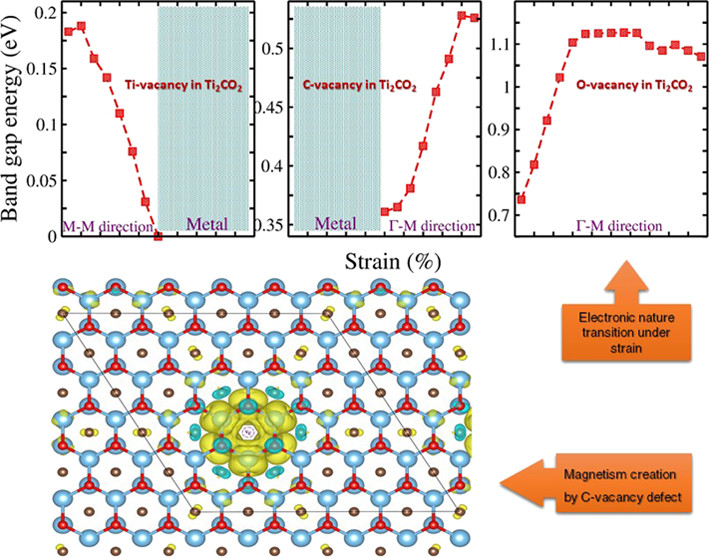Taoufik Skhraoui a František Karlický mají nový článek
Electronic nature transition and magnetism creation in vacancy defected Ti2CO2 MXene under biaxial strain: DFTB+U study.
(ACS)
Taoufik Sakhraoui, and František Karlický
Abstract
The structural, electronic, and magnetic properties of vacancy defect in Ti2CO2 MXene and the effect of strain have been investigated using the density functional tight-binding (DFTB) approach including spin-polarization with Hubbard onsite correction (DFTB + U). The band gap of pure Ti2CO2 is ∼1.3 eV, which decreases to ∼0.4 and ∼1.1 eV in the case of C- and O-vacancies, respectively, i.e., the semiconducting behavior is retained. In contrast, Ti2CO2 undergoes semiconductor-to-metal transition by the introduction of a single Ti-vacancy. This transition is the result of introduced localized states in the vicinity of the Fermi level by the vacancy. Both Ti- and O-vacancies have zero net magnetic moments. Interestingly, the nonmagnetic (NM) ground state of semiconducting Ti2CO2 turns into a magnetic semiconductor by introducing a C-vacancy with a magnetization of ∼2 μB/cell. Furthermore, we studied the effect of strain on the electronic structure and magnetic properties of Ti-, C-, and O-vacant Ti2CO2. The nature of the band gap in the presence of single O-vacancy remains indirect in both compression and tensile strain, and the size of the band gap decreases. Compression strain on Ti-vacant Ti2CO2 changes metal into a direct semiconductor, and the metallic character remains under tensile biaxial strain. In opposition, a semiconductor-to-metal transition occurs by applying a compressive biaxial strain on C-vacant Ti2CO2. We also find that the magnetism is preserved under tensile strain and suppressed under compression strain on VC-Ti2CO2. Moreover, we show that double C-vacancies maintain magnetism. Our findings provide important characteristics for the application of the most frequent MXene material and should motivate further investigations because experimentally achieved MXenes always contain point defects.

